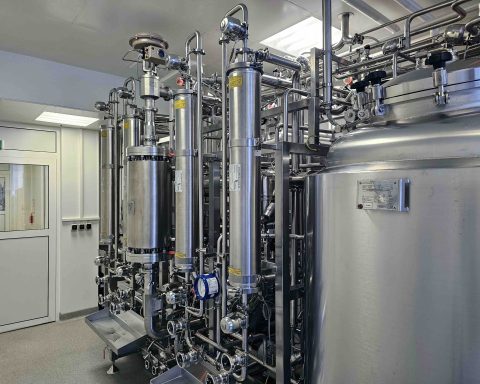Author: Fahad Hussain, Founder Editor of Pharma Mirror Magazine.
Background
Proclamation of The Pharmacy Ordinance 1976 recognized Pharmacy as a profession in Bangladesh [1]. Pharmacy is the health profession that links the health sciences with the chemical sciences and it is charged with ensuring the safe and effective use of pharmaceutical drugs [2] and Pharmacist means a person who, for a fee, salary or other compensation paid to him or to another person on his behalf manufactures, prepares, distributes, sells or serves any prescription for any medicine, drug or pharmaceutical preparation [1].
Bangladeshi pharmacists are working in different practice settings with dominance in pharmaceuticals manufacturing and marketing [3] over the second highest recruiting academic sector. A very few number of Pharmacists are engaged in research organizations and administration. Although Clinical Pharmacy and Community Pharmacy have not breathed yet [3] while Hospital Pharmacy is crawling ahead in a limited settings.
There are 267 licensed pharmaceutical companies in Bangladesh [4]. The industry contributes 1% to the country’s GDP and is the third largest industry in terms of contribution to government revenue [5]. The market is almost self-sufficient in meeting local demand as 97% of the drugs are manufactured locally and in 2011 the retail market size was estimated around BDT 84 billion [5]. The Bangladesh pharmaceutical industry is exporting to 92 countries [6] and the exported products worth more than US$ 50 million in 2012 fiscal year [7]. In all of these professional settings pharmacists are playing key roles for the development of Bangladeshi pharma arena, and pharmacy has become a dignified profession.
Understanding the status of the pharmacy profession including the quality of work life from the perspective of pharmacists is essential. Quality of work life encompasses a wide variety of work related attitudes and behaviors relating professional satisfaction. Current information about the perspectives of pharmacists’ in Bangladesh regarding career growth and their professional satisfaction is unavailable.
Objectives
The study was conducted to collect information about pharmacists’ satisfaction in their practice settings in Bangladesh to understand their perceived benefit of jobs and career satisfaction.
Methods
Design: This study used a web-based cross-sectional, self-administered survey instrument to elicit responses to a variety of questions from the pharmacists about professional satisfaction.
Survey Development: The survey was developed based on previous research and the objectives of this study. The survey was validated for clarity and time of completion by five pharma executives in different practice settings. Based on feedback from the pilot study, the survey was updated and disseminated using google docs & public advertising on pharma mirror mag.
Participants: The study population included all pharmacists who were practicing in Bangladesh in various settings including pharmaceutical factories, product management departments, academic institutions, hospitals, research organizations and indenting firms. One hundred and twenty five participants completed the survey at their convenience using digital media. Consent was assumed upon clicking on the Submit button of the completed survey form.
Survey Questionnaire: The survey instrument was consisted of 12 compulsory with a few other related questions on a variety of topics. Demographic questions addressed sex, graduating university type, unemployment after starting CV submission and current primary type of employment. The question “How satisfied are you with your current job?” was asked in order to elicit information regarding job satisfaction. A general knowledge question in Bengali language was added to stop non-Bangladeshi from filling the survey form. This approach reduces the chance of error at a greater extent.
Analysis: Responses were collected on the survey website in a Microsoft Office Spreadsheet and data analysis was also done automatically by using server-side statistical tools. The collected responses were well organized with inclusion time as serial in the Spreadsheet. Duplicate insertion of same response at the same time was removed from the Spreadsheet. The survey was run for 3 months from 5 Nov 2012 to 5 February 2013.
Limitation
i) English survey disseminated to pharmacists who speak English as a second language.
ii) Small number of responses limited the generalizability of the study’s findings to the overall pharmacist population in Bangladesh.
iii) Response rate was not countable because of freely advertising of this survey in pharmacists community.
iv) Although web-based surveys reduce costs, ensure participants’ anonymity, and facilitate data collection, using this type of survey might have influenced the response rate because of technical incompatibilities and users’ confidence with the Internet.
Results
Demographic: Among 125 participants 107(87%) were men and 18(14%) were women, total of them 76(61%) and 49(39%) graduated from private and public university respectively. There were 36 (29%) B.Pharm, 72 (57%) M.Pharm and 8 (6%) pharmacists who hold M.Pharm & MBA both degree.
Forty-two percent of respondents worked in pharmaceutical manufacturing plant; 38%, in pharmaceutical marketing; and 8%, in academic settings; 5%, in hospital pharmacy. Those in the other category worked in research organization (2%), and (1%) in training, clinical trials, sales, indenting firms each.
The highest portion (48%) of respondents was entry level officer while senior officers were the second highest (29%). Twelve percent respondents were managers, 8% were academician and 2% were plant managers.
Career satisfaction: With regard to workload, 44% respondents were satisfied while 25% were dissatisfied and others went to neutral position.
To the question of connection between pay and performance 46% pharmacists were dissatisfied, 26% and 22% were satisfied and neutral respectively.
In case of financial satisfaction 48% populations showed dissatisfaction where only 22% showed satisfaction and others showed neither satisfaction nor dissatisfaction.
About overall satisfaction with their jobs 54% pharmacists agreed that they were satisfied in different levels but 30% showed dissatisfaction with 16% people in neutral position.
In getting corporate manner from their supervisor or management 53% populations agreed that they got it sometimes. Thirty percent said that they received it in every manner while 16% claimed they did not get it ever from their management and boss.
To a question of job field expansion, 86% respondents agreed that working as medical representative is not satisfactory for pharmacy graduates. On the contrary, most of the senior pharmacists of managerial level think this job scope as satisfactory.
Recommendation
A number of participants gave their feedback to improve professional satisfaction in practice settings include creating new job opportunities like clinical pharmacy, hospital pharmacy and BCS jobs quota opening. They also urged to improve work environment, professional behavior and suggested not to discriminate between public and private university graduates regarding job facilities. The most talked issue was increasing salary and it should be started from minimum 30K at entry level as their suggestion. Satisfying pension scheme and job security have a great importance on job satisfaction and the pharmacists wanted assurance from their employers about these two issues from the job starting. The working pharmacists suggested their fellows to concentrate in their jobs, professional knowledge gathering and to stay at the same company for minimum five years at a time.
Conclusion
This study is the first known attempt to solicit the opinions of the pharmacist stakeholder group working in Bangladesh regarding their professional satisfaction. The study results have provided valuable information regarding the demographic characteristics and professional satisfaction of practicing pharmacists in the country. This information is being utilized to guide workforce planning, to help identify potential shortcomings in practice settings, and to better understand continuing education and professional satisfaction needs of Bangladeshi pharmacy practitioners.
Acknowledgement
Thanks to the Pharma Mirror team specially Azmery Kabir Lithi, Asif Mahmud and Emon Imran for their support to make this survey successful. Appreciation for the participants also for their thoughtful feedback.
Scholarly References
[1]. Bangladesh. The Pharmacy Ordinance, 1976. Ordinance No. XIII of 1976. (1976) Dhaka, Ministry of Law, Justice and Parliament affairs.
[2]. Wikipedia. n.d. Pharmacy. [Online] Available from: http://en.wikipedia.org/wiki/Pharmacy [Accessed 10 February 2013].
[3]. Mazid, M. A. & Rashid M. A. (2011) Pharmacy Education and Career Opportunities for Pharmacists in Bangladesh. Bangladesh Pharmaceutical Journal, 14(1), 1-9
[4]. Directorate General of Drug Administration. (2012) Allopathic. [Online]. Available from: http://www.dgda.gov.bd/index.php?menuName=Allopathic&mmn=Manufacturers [Accessed on 11 February 2013].
[5]. Saad, S. K. (ed.) (2012) An Overview of the Pharmaceutical Sector in Bangladesh. BRAC EPL: Stock Brokerage Ltd.
[6]. Hasina, S. (2012) Positioning Bangladesh: Branding for Business. [Speech] Pan Pacific Sonargaon Hotel, Dhaka, 5th December.
[7]. Ahmed, W. (25 October 2012) Pharma industry: The journey ahead. The Financial Express. [Online] Available from: http://goo.gl/5TE3V [Accessed on 12th February 2013]
How to cite this article in your write up?
Warning/Notice?
Do not reproduce or copy the article on any website or print material!









[…] Pharmacists' Satisfaction in Professional Life in Bangladesh … […]